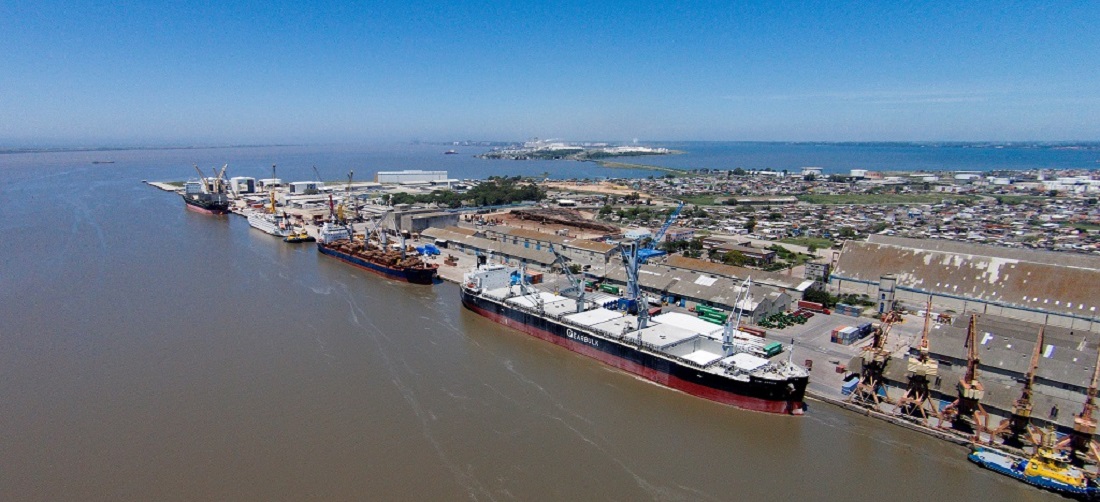
Road travel hindrances poised to affect Port of Rio Grande’s grain exports
May, 13, 2024 Posted by Gabriel MalheirosWeek 202420
Amidst a backdrop of flooding disrupting vital highways, the logistics flow in Rio Grande do Sul faces hindrances, prompting a strategic shift towards waterways as crucial conduits for product transport in the region. With the advancing floods encroaching upon the southern region, attention is increasingly directed towards the Port of Rio Grande, the primary conduit for imports and exports in Rio Grande do Sul.
While the precise toll on the summer harvest and other agribusiness sectors remains under assessment, it is evident that repercussions will extend to the operations of the port terminal.
Fernando Estima, the Planning and Development Manager at Portos RS, articulated, “We anticipate a decline in exports, attributable both to reduced product availability and logistical constraints as grains struggle to reach the port.”
Since Friday (10), the Port of Rio Grande has served as a pivotal hub for humanitarian aid and military deployments amidst the largest climate-related catastrophe in Rio Grande do Sul’s recent history. While this operation persists, there may be adjustments in the allocation of spaces for cellulose, grains, and fertilizers to accommodate humanitarian supply vessels. However, authorities affirm that such measures will not jeopardize terminal operations or precipitate a backlog in ship scheduling.
“We are exerting every effort to sustain uninterrupted operations, recognizing that facilitating the inflow and outflow of goods is paramount to upholding the economic vitality of Rio Grande do Sul,” assured Estima.
The chart below builds on DataLiner data to show Rio Grande Port’s container throughput (exports and imports), measured in TEUs.
Rio Grande Container Throughput | Jan 2021 – Mar 2024 | TEUs
Source: DataLiner (click here to request a demo)
Cristiano Oliveira, an associate professor at the Federal University of Rio Grande (FURG), underscores the multifaceted impact of flooding on grain production, encompassing hindrances from harvesting to transportation, notably impeding access to the port.
In a recent publication, Oliveira emphasized that obstructions to logistical flow are poised to disrupt soybean exports. Despite the port’s operational readiness, complex travel along BR-116 and BR-386 impedes product transportation to the terminal. Approximately half of Rio Grande do Sul’s grain output is earmarked for exportation via the Port of Rio Grande.
Source: Zero Hora
Click here to access the original text in Portuguese: https://gauchazh.clicrbs.com.br/colunistas/gisele-loeblein/noticia/2024/05/com-escoamento-por-terra-dificultado-porto-de-rio-grande-deve-ter-impacto-nas-exportacoes-de-graos-clw3n6gfr01540152ml260923.html
-
Ports and Terminals
Jul, 04, 2019
0
Ogmo raises disagreement between BTP and Santos Brasil due to labor debt
-
Shipping
Mar, 11, 2021
0
Vote on BR do Mar cabotage project scheduled for March 23
-
Ports and Terminals
Oct, 14, 2021
0
Transportation of cargo via rail up 25% at Paraná port
-
Ports and Terminals
Nov, 09, 2023
0
Log-In Logística Intermodal Reports 10th Consecutive Profitable Quarter in Q3 2023

